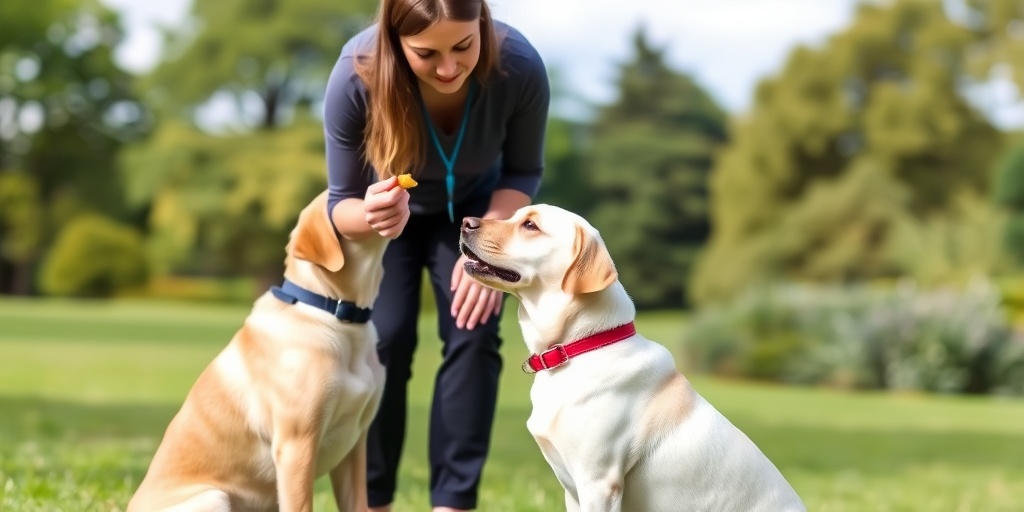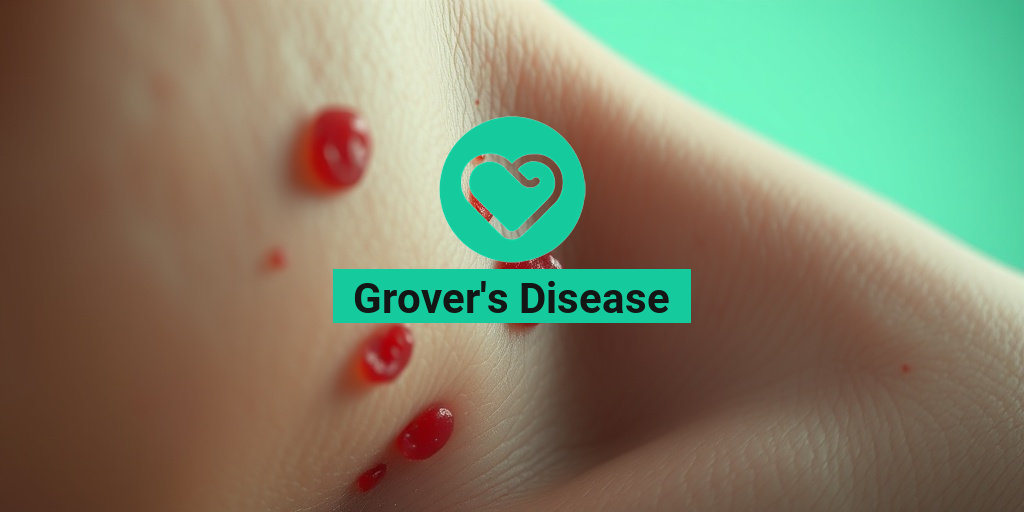What Are Dogs?
Dogs, often referred to as “man’s best friend,” are domesticated mammals that belong to the Canidae family. They have been companions to humans for thousands of years, serving various roles from loyal pets to working animals. With over 340 recognized dog breeds worldwide, dogs come in all shapes, sizes, and temperaments, making them one of the most diverse species on the planet. 🐶
The History of Dogs
The domestication of dogs is believed to have begun around 15,000 years ago, when early humans started to form bonds with wolves. Through selective breeding, these wolves evolved into the dogs we know today. This long history has led to a variety of dog breeds that serve different purposes, such as herding, hunting, guarding, and companionship.
Types of Dogs
Dogs can be categorized into several types based on their size, purpose, and temperament. Here are some common categories:
- Small Dogs: Breeds like Chihuahuas and Pomeranians are known for their compact size and lively personalities.
- Big Dogs: Larger breeds such as Great Danes and St. Bernards are often gentle giants, known for their loyalty and protective nature.
- Working Dogs: These dogs, including German Shepherds and Rottweilers, are trained for specific tasks like police work or search and rescue.
- Hypoallergenic Dogs: Breeds like Poodles and Bichon Frises are known to produce fewer allergens, making them suitable for allergy sufferers.
Regardless of their type, dogs share common traits that make them beloved companions. They are known for their loyalty, intelligence, and ability to form strong bonds with humans. 🐕
Dogs’ Health Benefits
Having a dog can significantly enhance your physical and mental well-being. Numerous studies have shown that the presence of dogs can lead to various health benefits, making them more than just pets; they are valuable companions that contribute to a healthier lifestyle. Here are some of the key health benefits of owning a dog:
Physical Health Benefits
1. Increased Physical Activity: Dogs require regular walks and playtime, which encourages their owners to stay active. This can lead to improved cardiovascular health, weight management, and overall fitness. 🏃♂️
2. Lower Blood Pressure: Studies have shown that petting a dog can reduce stress and lower blood pressure. The calming effect of interacting with dogs can lead to a more relaxed state, benefiting heart health.
3. Enhanced Immune System: Exposure to dogs, especially in childhood, can strengthen the immune system and reduce the risk of allergies and asthma. This is particularly true for families with young children who grow up with dogs.
Mental Health Benefits
1. Reduced Stress and Anxiety: Dogs have a unique ability to sense human emotions. Their presence can provide comfort and companionship, helping to alleviate feelings of loneliness and anxiety.
2. Improved Mood: Interacting with dogs releases endorphins, the “feel-good” hormones, which can elevate mood and combat depression. The unconditional love and affection from dogs can be incredibly uplifting.
3. Social Interaction: Owning a dog can increase social interactions. Dog owners often meet other pet lovers during walks or at dog parks, fostering a sense of community and belonging.
Conclusion
In summary, dogs are not just pets; they are companions that offer numerous health benefits. From promoting physical activity to enhancing mental well-being, the presence of a dog can lead to a happier and healthier life. If you’re considering adding a furry friend to your family, remember that there are many dogs for adoption and dogs for sale waiting for a loving home. 🏡
For more information on health-related topics, including how to care for your dog and the benefits of pet ownership, visit Yesil Health AI for evidence-based health answers.

Dogs’ Common Health Issues
As a dog owner, it’s essential to be aware of the common health issues that can affect your furry friend. Just like humans, dogs can experience a variety of health problems throughout their lives. Understanding these issues can help you take proactive steps to ensure your dog’s well-being. Here are some of the most prevalent health concerns for dogs:
1. Obesity
Obesity is one of the most common health issues affecting dogs today. It can lead to serious complications such as diabetes, heart disease, and joint problems. Factors contributing to obesity include:
- Overfeeding: Many owners tend to give their dogs too many treats or larger portions than necessary.
- Lack of Exercise: Dogs need regular physical activity to maintain a healthy weight.
- Genetics: Some breeds are more prone to obesity than others.
To combat obesity, ensure your dog has a balanced diet and regular exercise routine. Consult your veterinarian for personalized advice.
2. Dental Disease
Dental health is often overlooked in dogs, but it is crucial for their overall well-being. Periodontal disease can lead to pain, tooth loss, and even systemic infections. Signs of dental issues include:
- Bad breath
- Red or swollen gums
- Difficulty eating
Regular dental check-ups and at-home dental care, such as brushing your dog’s teeth, can help prevent dental disease.
3. Allergies
Just like humans, dogs can suffer from allergies. These can be triggered by various factors, including food, pollen, dust mites, and flea bites. Symptoms of allergies in dogs may include:
- Itchy skin
- Ear infections
- Excessive licking or scratching
If you suspect your dog has allergies, consult your veterinarian for appropriate testing and treatment options.
4. Arthritis
Arthritis is a common condition in older dogs, leading to joint pain and stiffness. It can significantly affect your dog’s quality of life. Signs of arthritis include:
- Difficulty getting up or lying down
- Reluctance to walk or play
- Swelling in the joints
Managing arthritis often involves a combination of medication, weight management, and physical therapy.
5. Skin Conditions
Skin issues are prevalent among dogs and can arise from various causes, including allergies, parasites, and infections. Common skin conditions include:
- Hot spots
- Fleas and ticks
- Dermatitis
Regular grooming and veterinary check-ups can help keep your dog’s skin healthy.
Dogs’ Nutrition Needs
Proper nutrition is vital for your dog’s health and longevity. Understanding your dog’s nutritional needs can help you make informed choices about their diet. Here are some key aspects to consider:
1. Balanced Diet
A balanced diet for dogs typically includes a mix of proteins, carbohydrates, fats, vitamins, and minerals. The right balance can vary based on your dog’s age, size, and activity level. Here’s a breakdown of essential nutrients:
- Proteins: Essential for growth, maintenance, and repair of tissues. Look for high-quality protein sources like chicken, beef, or fish.
- Carbohydrates: Provide energy and aid in digestion. Whole grains and vegetables are excellent sources.
- Fats: Necessary for healthy skin and coat, as well as energy. Omega-3 and Omega-6 fatty acids are particularly beneficial.
2. Age-Specific Nutrition
Dogs have different nutritional needs at various life stages:
- Puppies: Require a diet rich in protein and calories to support their rapid growth.
- Adult Dogs: Need a balanced diet to maintain their health and energy levels.
- Senior Dogs: May benefit from lower-calorie diets to prevent obesity and joint issues.
3. Special Dietary Needs
Some dogs may have specific dietary requirements due to health conditions. For example:
- Allergies: Dogs with food allergies may need a special hypoallergenic diet.
- Weight Management: Overweight dogs may require a reduced-calorie diet.
Always consult your veterinarian before making significant changes to your dog’s diet.
4. Hydration
Water is just as important as food. Ensure your dog has access to fresh, clean water at all times. Proper hydration supports digestion, circulation, and overall health.
By understanding your dog’s common health issues and nutritional needs, you can provide the best care possible for your beloved pet. 🐾

Dogs’ Exercise Requirements
Ensuring your dog gets enough exercise is crucial for their overall health and well-being. Just like humans, dogs need physical activity to maintain a healthy weight, reduce stress, and promote good behavior. But how much exercise do dogs really need? Let’s dive into the specifics!
Understanding Your Dog’s Needs
The exercise requirements for dogs can vary significantly based on several factors, including breed, age, and health status. Here’s a breakdown:
- Small Dogs: Breeds like Chihuahuas and Pomeranians may only need about 30 minutes of exercise each day. Short walks and playtime in the yard can suffice.
- Medium Dogs: Breeds such as Beagles and Bulldogs typically require 1 to 1.5 hours of exercise daily. This can include walks, runs, and interactive play.
- Big Dogs: Larger breeds like Golden Retrievers and German Shepherds often need 1.5 to 2 hours of exercise each day. They thrive on activities that challenge them physically and mentally.
Types of Exercise for Dogs
Exercise doesn’t have to be monotonous! Here are some engaging activities to keep your furry friend active:
- Walking: A daily walk is essential for all dogs. It helps them explore their environment and socialize with other dogs and people.
- Running: If you’re a runner, consider taking your dog along. Many dogs love to run and can be great companions on your jogs.
- Fetch: This classic game is not only fun but also a fantastic way to get your dog moving. It’s especially great for high-energy breeds.
- Agility Training: Setting up an agility course in your backyard can provide both physical and mental stimulation for your dog.
- Swimming: Many dogs enjoy swimming, and it’s an excellent low-impact exercise, especially for older dogs or those with joint issues.
Signs Your Dog Needs More Exercise
It’s essential to recognize when your dog may not be getting enough exercise. Look for these signs:
- Excessive Barking: If your dog is barking more than usual, it might be a sign they have pent-up energy.
- Destructive Behavior: Dogs that are bored or under-exercised may chew furniture or dig in the yard.
- Weight Gain: If your dog is gaining weight, it’s a clear indicator that they need more physical activity.
Dogs’ Grooming Tips
Grooming is an essential part of dog care that goes beyond just keeping your pet looking good. Regular grooming helps maintain your dog’s health and comfort. Here are some tips to keep your furry friend looking and feeling their best!
Brushing Your Dog’s Coat
Regular brushing is vital for all dogs, regardless of their coat type. Here’s how to approach it:
- Short-Haired Dogs: Breeds like Beagles and Boxers require less frequent brushing, about once a week, to remove loose hair and dirt.
- Long-Haired Dogs: Breeds such as Golden Retrievers and Shih Tzus need more frequent brushing, ideally every few days, to prevent mats and tangles.
- Hypoallergenic Dogs: Breeds like Poodles and Bichon Frises may require specialized grooming to manage their unique coats.
Bathing Your Dog
Bathing frequency can depend on your dog’s activity level and coat type. Here are some guidelines:
- Active Dogs: If your dog loves to play outside, they may need a bath every month or so.
- Less Active Dogs: Dogs that stay indoors may only need a bath every few months.
- Use Dog-Specific Shampoo: Always use products designed for dogs, as human shampoos can irritate their skin.
Nail Trimming and Ear Cleaning
Don’t forget about your dog’s nails and ears! Regular maintenance is key:
- Nail Trimming: Keep your dog’s nails trimmed to prevent discomfort and injury. Aim for every 3-4 weeks.
- Ear Cleaning: Check your dog’s ears regularly for dirt and wax buildup. Use a vet-recommended cleaner to keep them healthy.
By following these grooming tips and ensuring your dog gets the right amount of exercise, you’ll help them lead a happy, healthy life! 🐾

Dogs’ Vaccination Schedule
Vaccinations are a crucial part of keeping your dogs healthy and protected from various diseases. Just like humans, dogs require a series of vaccinations throughout their lives to ensure they remain safe and healthy. Understanding the vaccination schedule for your furry friend can help you stay on top of their health needs.
Why Vaccinations Are Important
Vaccinations help to prevent serious diseases that can affect your dog. Some of the most common illnesses that vaccines protect against include:
- Canine Parvovirus: A highly contagious virus that can be fatal.
- Canine Distemper: A severe disease that affects the respiratory, gastrointestinal, and nervous systems.
- Rabies: A deadly virus that can be transmitted to humans.
- Leptospirosis: A bacterial infection that can lead to kidney damage.
By vaccinating your dogs, you not only protect them but also help to prevent the spread of these diseases to other pets and even humans. 🐾
Typical Vaccination Schedule
The vaccination schedule for dogs typically begins when they are puppies. Here’s a general timeline:
- 6-8 weeks: First round of vaccinations (DHPP – Distemper, Hepatitis, Parvovirus, Parainfluenza).
- 10-12 weeks: Second round of DHPP and the first rabies vaccine.
- 14-16 weeks: Third round of DHPP and additional vaccines like Bordetella (kennel cough).
- 1 year: Booster shots for DHPP and rabies.
- Every 1-3 years: Booster shots depending on the vaccine type and your vet’s recommendations.
Always consult with your veterinarian to tailor the vaccination schedule to your dog’s specific needs, especially if you have a breed that may be more susceptible to certain diseases.
Common Concerns About Vaccinations
Many pet owners have questions or concerns regarding vaccinations. Here are a few common ones:
- Are vaccines safe? Yes, vaccines are generally safe and effective. Side effects are rare and usually mild.
- Can my dog have a reaction? While reactions can occur, they are uncommon. Always monitor your dog after vaccination and consult your vet if you notice anything unusual.
- What if I miss a vaccination? If you miss a vaccination, consult your veterinarian for guidance on how to proceed.
Staying informed about your dog’s vaccination schedule is essential for their health and well-being. 🐶
Dogs’ Behavioral Training
Training your dog is one of the most rewarding experiences you can have as a pet owner. Not only does it help to establish a strong bond between you and your furry friend, but it also ensures that your dog behaves appropriately in various situations. Let’s explore the fundamentals of dogs’ behavioral training.
Why Behavioral Training is Essential
Behavioral training is crucial for several reasons:
- Safety: A well-trained dog is less likely to engage in dangerous behaviors, such as running into traffic.
- Socialization: Training helps your dog interact positively with other pets and people.
- Obedience: Teaching commands like “sit,” “stay,” and “come” can prevent unwanted behaviors.
Training is not just about commands; it’s about building a trusting relationship with your dog. 🐕
Basic Commands to Teach Your Dog
Here are some fundamental commands that every dog should learn:
- Sit: A basic command that helps your dog learn self-control.
- Stay: This command is essential for keeping your dog in one place.
- Come: Teaching your dog to come when called is vital for their safety.
- Leave it: This command can prevent your dog from picking up harmful objects.
Positive Reinforcement Techniques
Using positive reinforcement is one of the most effective training methods. Here’s how it works:
- Rewards: Use treats, praise, or toys to reward your dog for good behavior.
- Consistency: Be consistent with commands and rewards to help your dog understand what is expected.
- Patience: Training takes time, so be patient and understanding with your dog as they learn.
Remember, every dog learns at their own pace, so celebrate small victories along the way! 🎉
By investing time in your dog’s behavioral training, you are setting the foundation for a happy and well-adjusted pet. 🐾

Frequently Asked Questions about Dogs
What are the different types of dogs?
There are numerous types of dogs categorized by size, breed, and purpose. Some popular categories include:
- Small dogs – Breeds like Chihuahuas and Pomeranians.
- Big dogs – Breeds such as Great Danes and St. Bernards.
- Hypoallergenic dogs – Breeds that are less likely to trigger allergies, like Poodles and Bichon Frises.
Can dogs eat bananas?
Yes, dogs can have bananas in moderation! This fruit is a healthy treat that provides vitamins and minerals. Just be sure to remove the peel before offering it to your furry friend. 🍌
What are some cute dog breeds?
Many people adore cute dogs, and some of the most popular breeds include:
- French Bulldogs
- Cavalier King Charles Spaniels
- Shih Tzus
How can I adopt a dog?
If you’re looking to bring a new friend into your home, consider dogs for adoption through local shelters or rescue organizations. Many places have websites where you can view available dogs and learn about their backgrounds.
What are the benefits of having a dog?
Having a dog can provide numerous benefits, including:
- Companionship and emotional support
- Encouragement to stay active and healthy
- Increased social interactions with other dog owners
What should I know about dog training?
Training is essential for a well-behaved pet. Here are some tips:
- Start with basic commands like “sit,” “stay,” and “come.”
- Use positive reinforcement techniques, such as treats and praise.
- Be patient and consistent in your training approach.
Are there any specific health concerns for certain dog breeds?
Yes, different dog breeds can be prone to specific health issues. For example:
- Bulldogs may have respiratory problems.
- Large breeds like Great Danes can suffer from hip dysplasia.
- Small breeds may be more susceptible to dental issues.
What is the best way to care for my dog?
Caring for your dog involves providing a balanced diet, regular exercise, routine veterinary check-ups, and plenty of love and attention. 🐾
How do I find dogs for sale?
To find dogs for sale, you can check local breeders, pet stores, or online platforms that specialize in pet adoption and sales. Always ensure that the source is reputable and ethical.
What are war dogs and their roles?
War dogs are trained canines that assist military personnel in various roles, including detection of explosives, search and rescue operations, and providing companionship to soldiers.
Can dogs and cats live together?
Yes, many households successfully have both cats and dogs. Proper introductions and training can help them coexist peacefully. 🐶🐱




